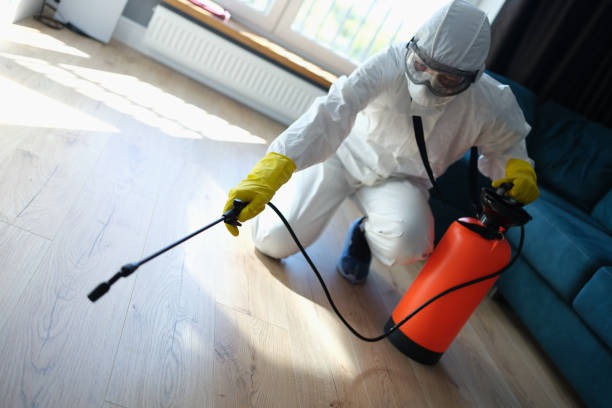Biohazard cleanup might sound like something straight out of a sci-fi movie, but it’s a vital service in the real world. Whether it’s due to a crime scene, unattended death, or hazardous spills, the need for professional biohazard cleanup and decontamination services can strike unexpectedly. But what exactly entails biohazard cleanup? Let’s explore.
What Is Biohazard Cleanup?
Biohazard cleanup involves the removal and sanitization of biohazards in environments that could pose a risk to health. These biohazards include blood, bodily fluids, chemicals, and numerous other pathogens that can lead to serious health issues if not handled correctly.
When Might You Need These Services?
-
Crime scenes or traumatic events
-
Unattended deaths
-
Hoarding situations
-
Chemical spills
-
Infectious disease contamination
Why Professional Help Is Crucial
Attempting to handle a biohazard situation yourself is not only risky but also emotionally challenging. Professional biohazard cleanup services are designed to manage these risks competently. They have the necessary skills, equipment, and training to ensure your environment is completely decontaminated.
1. Expertise and Training
Biohazard cleanup isn’t just about wiping surfaces clean. Experts undergo rigorous training to handle and dispose of biohazards. This ensures that all contaminants are thoroughly removed and the area is safe for re-entry.
2. Specialized Equipment
Professionals use specialized equipment to manage biohazards effectively. This includes personal protective equipment (PPE), industrial-grade sanitizers, and advanced machinery to detect and clean contaminants.
3. Emotional Support
Dealing with a traumatic incident is difficult, and professionals offer not just technical expertise but also emotional support. They understand the gravity of the situation and handle it with the sensitivity it deserves.
The Biohazard Cleanup Process
So, what does the biohazard cleanup process look like? Let’s break it down step by step:
1. Assessment and Planning
First, the cleanup team assesses the scene to determine the extent of contamination. They then develop a comprehensive plan to address all hazards effectively.
2. Containment
The next step is containment. The team isolates the affected area to prevent cross-contamination. This ensures that biohazards do not spread to clean zones.
3. Removal and Disposal
Contaminated materials, including porous items that cannot be decontaminated, are safely removed and disposed of following regulatory guidelines to ensure environmental safety.
4. Cleaning and Disinfection
The area is then cleaned and disinfected using industrial-strength sanitizers. This step is crucial to eliminate any remaining biohazards.
5. Final Inspection
A final inspection ensures that the area is entirely clean and safe for re-entry. This step includes tests to confirm that no trace of biohazards remains.
Choosing the Right Service Provider
When it comes to biohazard cleanup, choosing the right provider is crucial. Here’s what to consider:
1. Experience and Credentials
Ensure the company you select has extensive experience in biohazard cleanup. Check their credentials and certifications to verify their expertise. Are they a top-rated biohazard cleanup company with a proven track record? These details speak volumes about their capabilities.
2. Comprehensive Services
Look for a provider that offers comprehensive biohazard cleanup services. They should handle everything from initial assessment to final inspection, ensuring no aspect is overlooked.
3. 24/7 Availability
Biohazards can occur at any time, so it’s essential to choose a provider that offers 24/7 services. Immediate response can help mitigate risks and prevent further contamination.
Potential Biohazard Situations
-
Crime and Trauma Scenes: Crime scenes and traumatic events can leave behind blood and bodily fluids. To prevent health risks, these biohazards must be properly cleaned. Specialized cleanup teams handle the decontamination professionally and sensitively.
-
Hoards and Unattended Deaths: Hoarding situations or unattended deaths present various biohazards, including decaying materials and pathogens. A comprehensive restoration company in Long Island can assist by thoroughly cleaning and sanitizing the affected areas, making them habitable again.
-
Chemical Spills: Chemical spills can be hazardous and require immediate attention. Professional teams are equipped to manage and neutralize these substances safely, ensuring no harm comes to people or the environment.
The Cost of Biohazard Cleanup
Biohazard cleanup can be expensive, but it’s a necessary investment for your health and safety. Costs vary depending on the extent of contamination and the services required. Here are a few factors that influence the cost:
-
Extent of Contamination: The more extensive the contamination, the higher the cost. Large-scale biohazard situations require more resources, time, and specialized equipment.
-
Types of Services Needed: Different biohazard situations call for different services. For example, crime scene cleanup might be less costly than decontaminating an entire home affected by a hoarding situation.
-
Urgency of Services: Emergency services are available 24/7, but they may be expensive. However, an immediate response is often essential to mitigate further damage and contamination.
Preparing for Biohazard Cleanup
If you find yourself in a situation requiring biohazard cleanup, it’s essential to know what to do while waiting for professionals to arrive. Here are some tips:
Stay Safe
Avoid entering or disturbing the contaminated area. Personal safety should be your top priority. Stay away until the professionals arrive and give the all-clear.
Inform the Authorities
If the biohazard is due to a crime or trauma, inform the authorities immediately. They will secure the area and initiate the necessary protocols.
Document the Scene
If it is safe, take photos and notes. Documenting the scene can be helpful for insurance claims and future reference.
Understanding Insurance Coverage
Many people wonder if biohazard cleanup is covered by insurance. The answer depends on your policy and the nature of the incident. Here are a few points to consider:
-
Review Your Policy: Check your insurance policy for clauses related to biohazard cleanup. Some policies cover specific biohazard situations, while others may not.
-
Communication with Your Insurer: Contact your insurance provider to discuss your coverage. Please provide them with all relevant information and documentation to support your claim.
-
Professional Water Damage: If water damage is involved in a biohazard situation, it’s essential to consider professional services. For professional water damage restoration on Long Island, NY, choosing a reputable service can make a significant difference.
Final Thoughts
Biohazard cleanup and decontamination services are crucial for maintaining health and safety in hazardous situations. Whether you’re dealing with a crime scene, unattended death, or chemical spill, professional help ensures that your environment is thoroughly cleansed and safe for re-entry. Always choose a service provider with the right expertise, equipment, and sensitivity to handle the task efficiently and compassionately.




